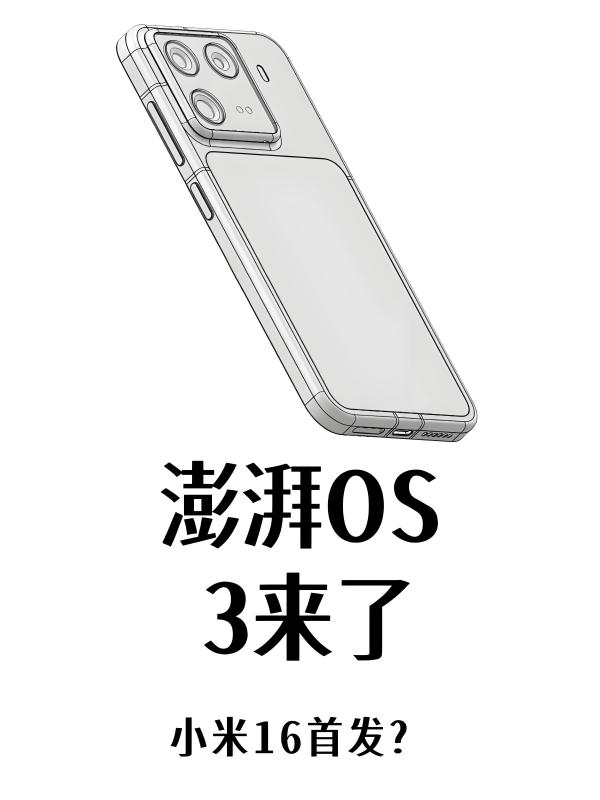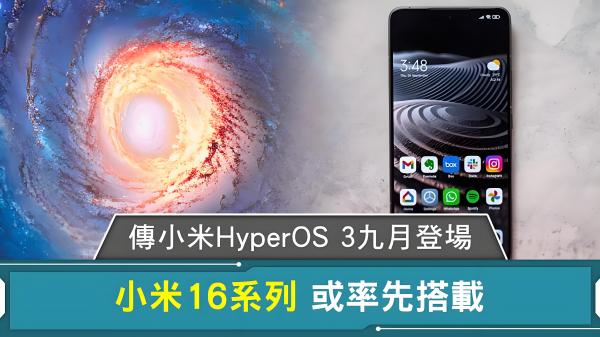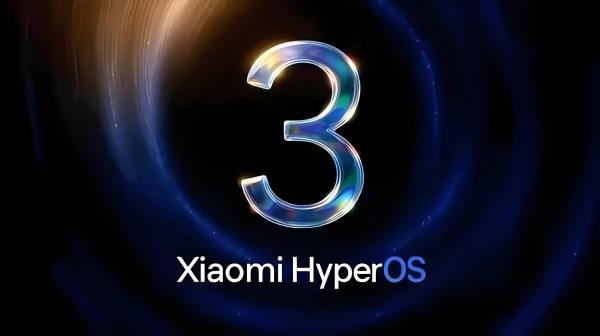Xiaomi Unveils Its Masterpiece: Penta OS 3 Speeds Towards Us, Leaving Mi Fans in Awe!
![]() 07/07 2025
07/07 2025
![]() 446
446
This fall, Xiaomi will release Penta OS 3 (overseas name: HyperOS 3), and it has already captivated fans with its official teasers and leaks. The new UI embraces the "Liquid Glass" aesthetic, featuring rounded icons and a matte semi-transparent frosted glass texture. The color palette is more refined than its predecessor, integrating iOS 26-inspired lock screen animations and deep blur, exuding an immediate "flagship-level" aura.

Core interactions have undergone a significant transformation: The top notification bar and control center have merged into a draggable floating window. With a simple pull-down gesture, users can adjust brightness, network settings, music, and smart scene switching all on one screen, dramatically reducing the number of steps required.
The wallpaper system is particularly impressive. Penta OS 3 introduces an AI Dynamic Wallpaper Engine that responds in real-time to gestures like taps and swipes, all in stunning 4K resolution. Over a dozen themes, including water waves, nebulae, and neon, adapt based on time, weather, and gravity sensors. It even transitions to a low-saturation night mode in dim environments to minimize glare and power consumption, outsmarting HyperOS 2's purely animated approach.
Xiaomi has also introduced the AI Personalized Recommendation feature. The system learns users' color preferences and photography tastes, dynamically generating and pushing wallpapers, ensuring that each device has a unique personality.

In terms of AI experience, Penta OS 3 upgrades last year's "Super XiaoAI" with local access to the DeepSeek-R1 lightweight model, boasting 7 billion parameters. It supports offline summarization, AI real-time subtitles, code drafting, and cross-language call translation, enabling instant inference without relying on the cloud. Xiaomi claims this solution reduces data exchange by 38% and improves response speed by 25%. Meanwhile, the new HyperAI service handles heavy cloud loads, transmitting large creative tasks back to the phone via edge computing, achieving a seamless end-cloud collaboration with privacy control.
Performance tuning is another highlight of this version. The system kernel has been upgraded to Android 16, paired with the new Surge Battery Firmware, integrating CPU scheduling, storage I/O, and power management. Tests on the Redmi K80 flagship prototype reveal a 9% decrease in standby power consumption and a 12% improvement in frame rate stability for high-refresh-rate games. The advanced power-saving mechanism extends to dynamic wallpapers and floating windows: When no interaction is detected for 30 seconds, the animation frame rate drops to 15 fps, and touch capture is disabled, striking a perfect balance between "aesthetics" and "power efficiency".
Device compatibility is also a significant aspect of this upgrade. Xiaomi's official channels have revealed that Penta OS 3 will support 96 devices, including 33 Xiaomi flagship models, 44 Redmi models, and 19 POCO models. The first batch of updates in China will coincide with the Xiaomi 16 series in September, with the global version rolling out OTA updates in October. Based on device performance, it will be maintained in two branches based on Android 15 and Android 16 to ensure smooth operation even on lower-end hardware. In response to feedback from older device users about "updates causing lag," Xiaomi asserts that this time, the "differential package + intelligent scheduling" strategy will be adopted, reducing the average download package size by 45% and halving the number of decompression and write operations during installation.
On the market front, the UI redesign and AI overhaul of Penta OS 3 are a rapid response to competitors' successive system upgrades. iOS 26 pioneered frosted glass and cross-device gestures, while Samsung One UI 8 embedded Galaxy AI into system-level search. Xiaomi aims to recapture young users with its "visual + wallpaper + edge model" combination. For developers, the HyperConnect 17.0.0 SDK enables direct connection protocols between Xiaomi cars, tablets, and IoT devices, allowing a single application to seamlessly adapt to different hardware, fostering creativity among ecological partners.

If all the leaks materialize, Penta OS 3 will be more than just a regular major version update; it will be a comprehensive overhaul of aesthetics, interactions, AI capabilities, and cross-device collaboration. For long-time MIUI users, it promises to address battery life and fluidity issues. For new Xiaomi ecosystem players, it offers visually stunning and experientially innovative features. As the September launch event approaches, will you be among the first to upgrade or wait for the actual experience? Share your thoughts in the comments, and let's see if Penta OS 3 truly deserves the title of "the strongest UI renovation."






